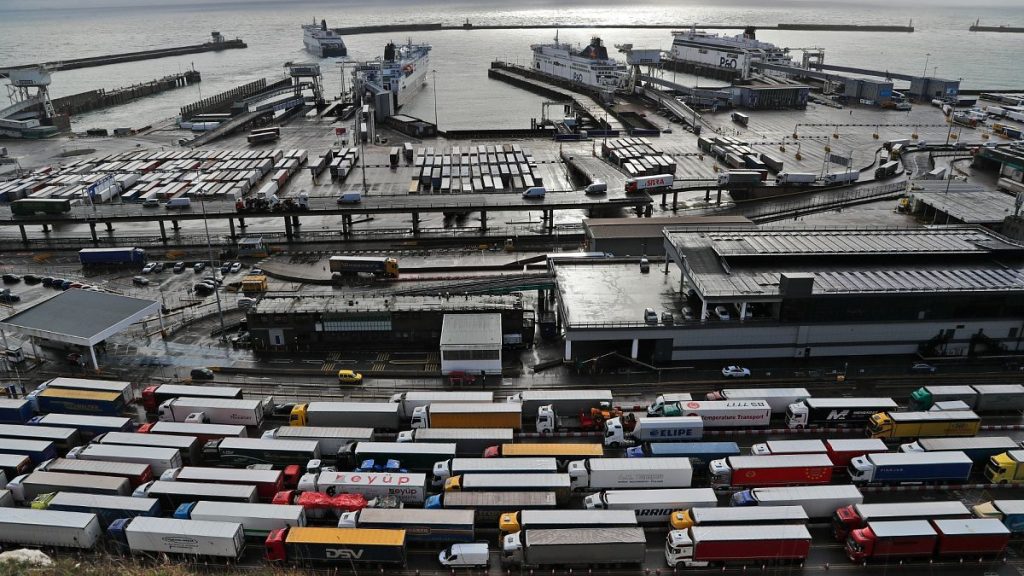The EU’s Entry/Exit System Rollout: What Travelers Need to Know
The European Union’s long-anticipated Entry/Exit System (EES) will begin rolling out on October 12th this year, marking a significant shift in how non-EU travelers enter the Schengen Area. After numerous delays, the digital border system will implement gradually over six months to minimize disruption. This phased approach comes as welcome news for travelers worried about potential border chaos, with major UK departure points like the Port of Dover and Eurotunnel confirming that most travelers won’t immediately face the new checks. The careful implementation strategy reflects lessons learned from previous large-scale border technology deployments and acknowledges the complex infrastructure needed to support this digital transformation of Europe’s borders.
The EES represents a fundamental change in border procedures for non-EU citizens entering the Schengen Area, including British and American travelers. At its core, the system will digitize the border crossing process by requiring visitors to scan their passports at self-service kiosks and provide biometric data including facial scans and fingerprints. This information will be stored for three years, streamlining future entries as travelers will only need to verify their identity against already-collected data. The system aims to modernize border management, enhance security through better tracking of entry and exit dates, and eventually eliminate manual passport stamping. For EU citizens and legal residents, the system won’t apply, creating dual processing paths at borders. This technological overhaul represents the most significant change to Europe’s border procedures in decades and establishes a foundation for the EU’s broader vision of digitized travel documentation.
To manage the transition smoothly, authorities have developed a careful implementation timeline tailored to different crossing points and traveler categories. The Port of Dover will begin by processing only coach passengers through EES on October 12th, directing them through a purpose-built Western Docks processing zone where they’ll disembark to register at dedicated kiosks before re-boarding to continue their journey. Car passengers at Dover will follow later, with 72 self-registration kiosks being installed to handle the volume. Similarly, Eurotunnel will initially implement EES checks only for freight and coach traffic starting October 12th, with passenger vehicles joining the system from November 1st. This staggered approach demonstrates how authorities have prioritized maintaining traffic flow while gradually introducing the new technology. Border authorities have also built in contingency measures, including the ability to temporarily suspend checks if processing times become excessive, reflecting a practical approach to what could otherwise be a challenging transition.
The physical infrastructure supporting this digital system represents a substantial investment, with the UK government reportedly providing £3.5 million (€4.1 million) each to Eurostar, Eurotunnel, and the Port of Dover for registration kiosks. Eurotunnel alone has installed 224 biometric kiosks across its terminals – 106 at Folkestone and 118 at Calais – creating a significant new layer of processing infrastructure. The scale of this investment highlights both the technical complexity of the system and its importance to maintaining efficient border operations. Different crossing points have designed custom solutions based on their unique constraints. For instance, EU citizens and non-EU nationals legally resident in EU/Schengen states will bypass the EES registration areas entirely, proceeding directly to border control. At Eurotunnel, all passengers initially check in at kiosks, with the system then directing EU citizens to continue their journey without entering the biometric data area, while non-EU travelers proceed to the additional verification steps.
Eurostar, facing particular challenges due to the historic constraints of London St Pancras station, has developed a comprehensive strategy to minimize disruption for cross-Channel rail travelers. The operator has doubled border staff numbers and manual booths while allowing passengers to board trains 30 minutes earlier than previously permitted – a simple operational change that creates breathing room in the congested departure areas. With limited space for the full complement of new EES kiosks (increasing from 24 to 49), Eurostar has distributed them throughout the station in areas currently used by domestic rail operators and the HS1 service. The operator estimates kiosk checks will take approximately 90 seconds per passenger and will have specially-trained staff available to assist travelers navigating the new system. In a particularly thoughtful approach to the transition period, Eurostar plans to initially require only certain passenger categories – frequent travelers and premium ticket holders – to use the kiosks, gradually expanding to all passengers over time.
The EES implementation represents a delicate balancing act between enhancing border security and maintaining efficient travel flows across Europe’s busiest crossings. While the system promises long-term benefits through faster processing for regular travelers once registered, the transition period will require patience and adaptation from both travelers and border authorities. The phased approach demonstrates how lessons from previous large-scale IT implementations have shaped a more realistic rollout strategy. For travelers planning European journeys after October 12th, understanding whether they’ll be affected depends on their citizenship status, travel method, and specific crossing point. EU citizens can continue as normal, while non-EU visitors should check the latest guidance for their specific route and prepare for potential additional processing time during this transition period. The success of this digital transformation will ultimately depend on both the technical performance of the new systems and the human elements of staff training and traveler education as Europe embraces this new chapter in border management.


